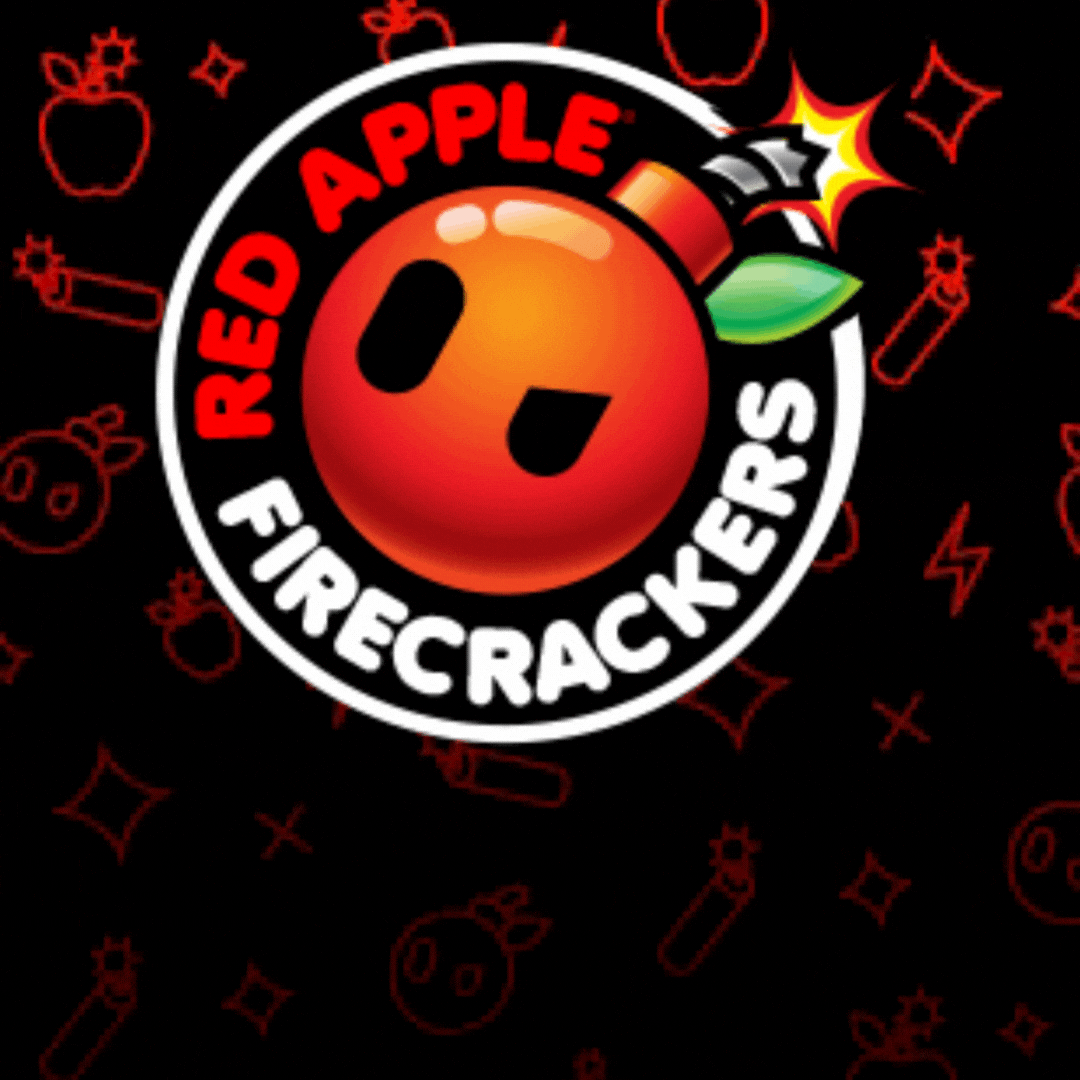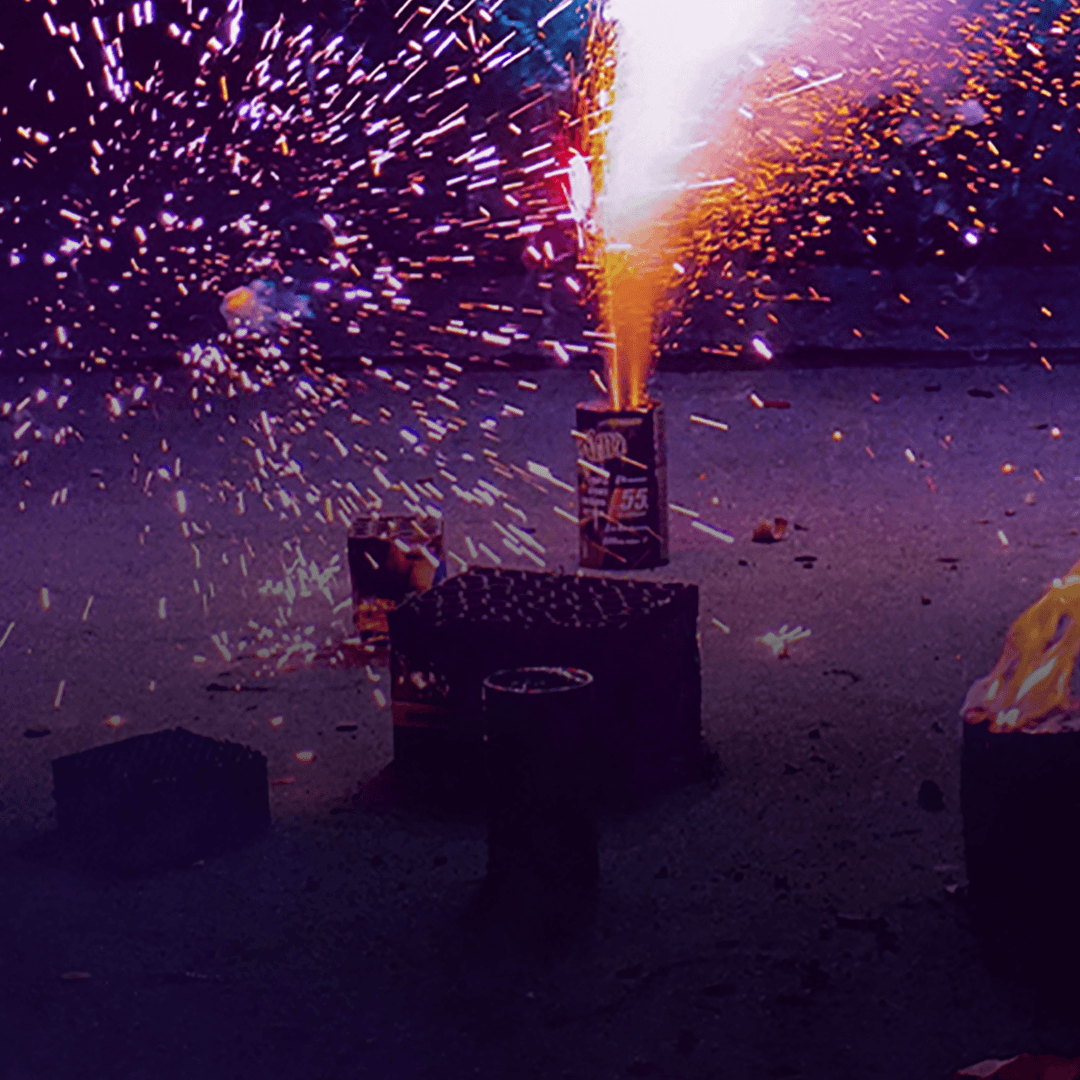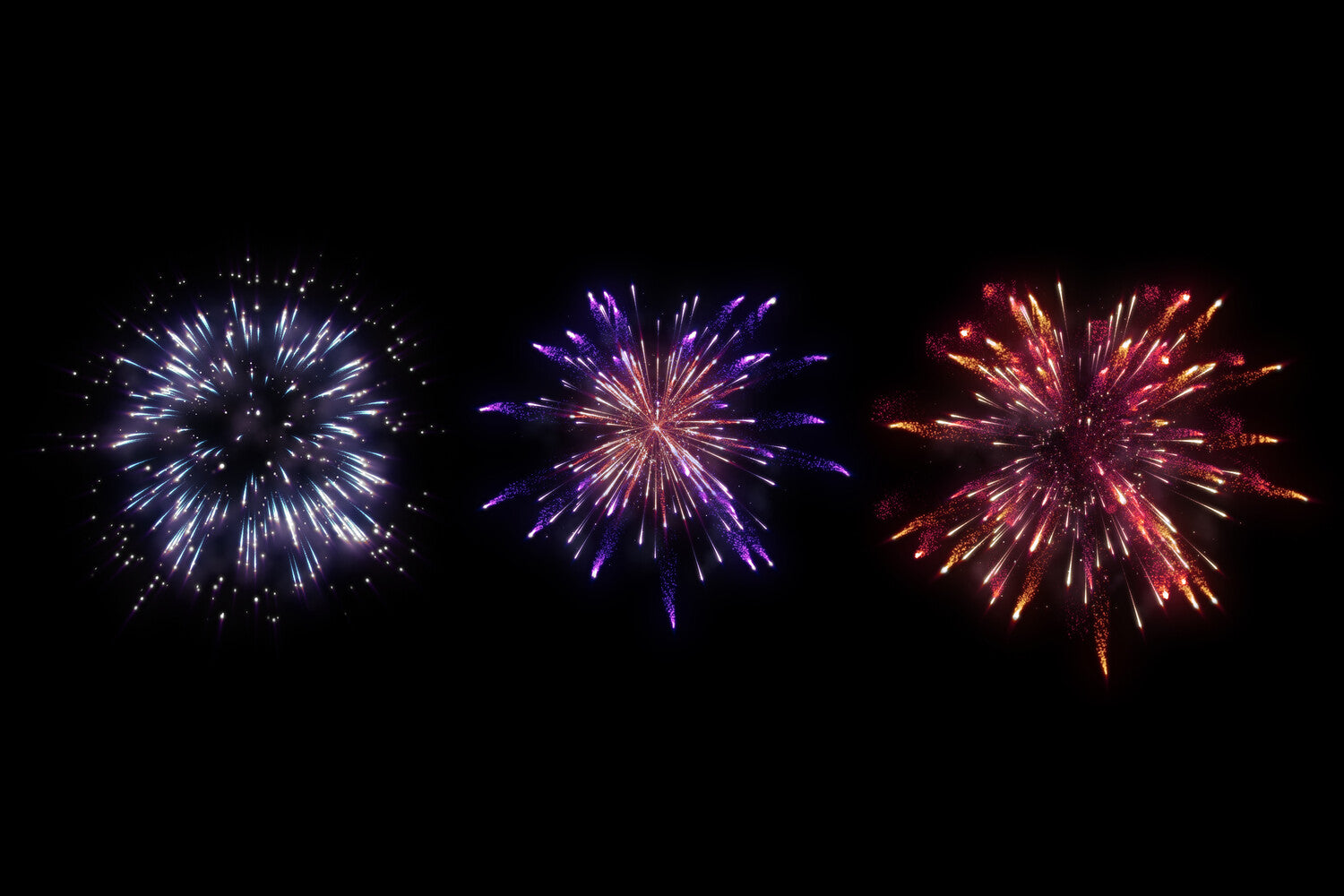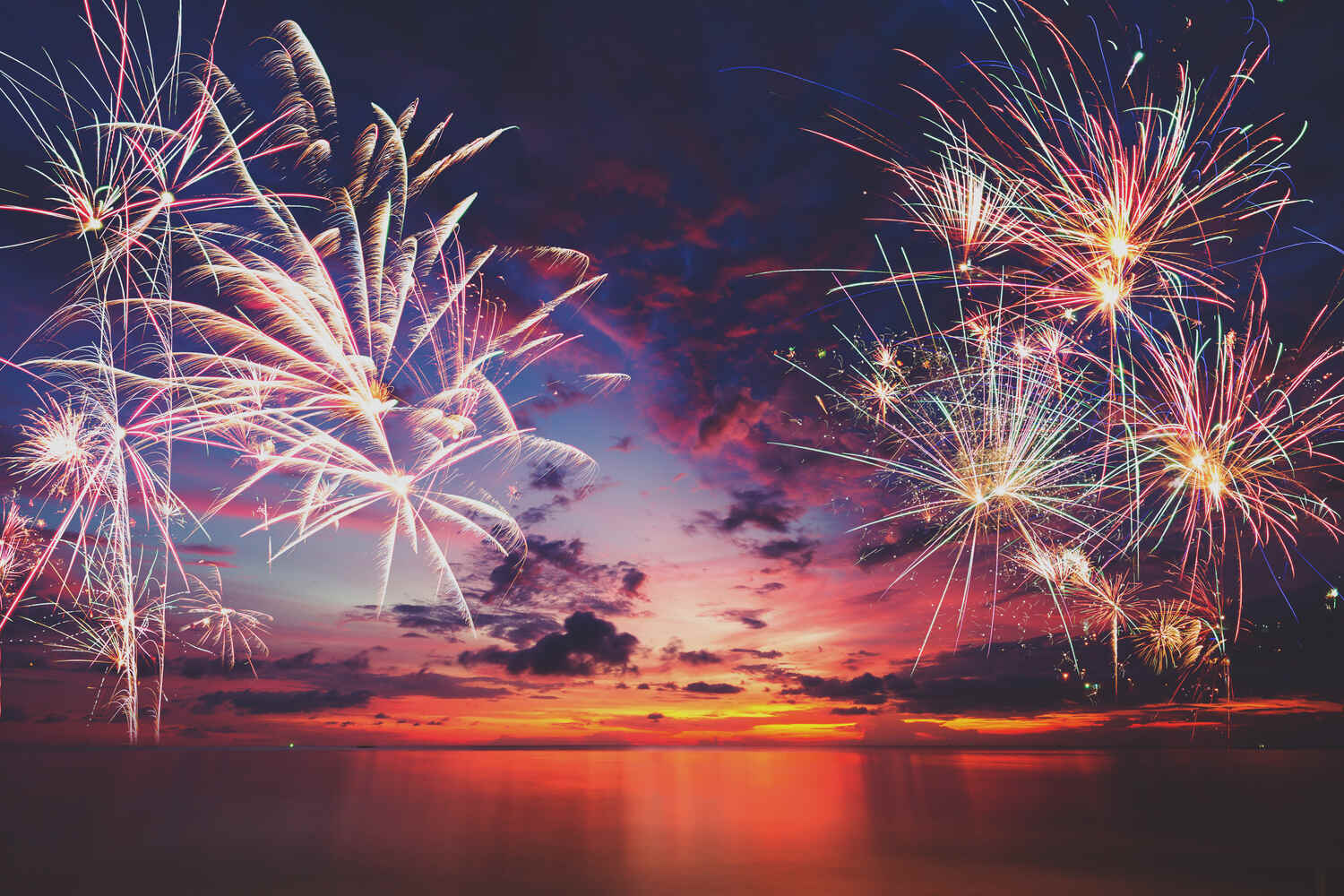Everyone loves fireworks! But have you ever paused mid-celebration to ask yourself, what exactly is a firework?
At Red Apple Fireworks, we've got the answer! Fireworks are more than just colorful explosions lighting up your backyard or local park—they're precision-engineered, safe, and thrilling entertainment.
Whether you're a DIY enthusiast stocking up for July 4th, a family creating memories, or an event planner seeking dazzling displays, let's dive into what makes fireworks so spectacular and unique.
What this article covers:
- The Basics of Firework Functionality
- The Science Behind Fireworks
- Types of Fireworks
- The Sounds and Effects of Fireworks
- Types of Fireworks
- Safety and Environmental Impact of Fireworks
- The Impact of Environmental Factors on Fireworks
The Basics of Firework Functionality
To truly appreciate fireworks, it's important to know what goes into their dazzling performance. From their precise chemistry to their careful assembly, fireworks are designed to create an unforgettable experience.
What Exactly Is A Firework?
A firework is a carefully constructed pyrotechnic device designed to create visual and auditory effects.
Essentially, they're devices made of explosive compounds that ignite in a controlled way to deliver color, sound, and excitement to any celebration.
Each firework from Red Apple Fireworks includes meticulously crafted components working together to create the perfect show every time.
The Structure of a Firework and Their Roles
Modern fireworks have several key parts. What are the component parts of modern fireworks?
Well, they typically include a shell (the main container), stars (small pellets of chemical compounds that create color), black powder or lifting charges (propelling fireworks skyward), bursting charges (for the explosion itself), and fuses or timing mechanisms for ignition precision.
At Red Apple Fireworks, we carefully choose each component for quality and performance.
The Science Behind Fireworks
Behind every dazzling display is fascinating science. Let's explore how fireworks achieve their magic!
How Fireworks Create Explosive Reactions
What causes fireworks? At their core, fireworks rely on controlled chemical reactions. A firework ignites when heat from a fuse sets off an oxidizer and fuel, rapidly generating gases.
This rapid reaction builds immense pressure inside the shell, causing the colorful explosion that captivates audiences.
Each explosion is carefully planned, timed, and tested to provide consistent, awe-inspiring results.
Combustion and Chemical Reactions in Fireworks
Combustion—the rapid reaction of fuel and oxidizer—powers every firework's explosion.
Fuel (often charcoal or sulfur) reacts with an oxidizer (usually potassium nitrate or perchlorates) to create immense heat and gas.
These chemical reactions produce vibrant colors, flashes, sparks, and dazzling patterns that have families and DIY enthusiasts cheering at every event.
Types of Fireworks
Fireworks come in many shapes and sizes, each offering a unique experience to light up your night.
Aerial Fireworks and Rockets
Aerial fireworks are among the most popular, creating sky-high explosions with vibrant patterns and stunning effects.
These fireworks use lifting charges and shells packed with "stars"—pellets of chemicals that burn brightly in various colors.
Rockets similarly use propellant fuel to launch skyward before bursting into dazzling displays. Red Apple
Fireworks offers aerial fireworks perfect for both family-friendly backyard events and large-scale professional celebrations.
The Sounds and Effects of Fireworks
Fireworks aren't just visual—they deliver an exciting auditory experience too.
How Fireworks Create Sound
The crackles, whistles, and thunderous booms of fireworks are intentional effects.
Exploding black powder and specially designed chemical mixtures produce the iconic sounds we associate with celebrations.
Our fireworks at Red Apple Fireworks offer effects ranging from subtle whistles for family gatherings to powerful thunderous finales for large-scale events.
The Physics Behind Firework Patterns and Effects
Physics shapes firework displays.
Precise arrangements of explosive charges and careful packaging determine firework patterns—from simple spherical bursts to intricate shapes like hearts, rings, or even smiley faces.
Red Apple Fireworks provides a variety of fireworks to match the creativity of event planners and backyard enthusiasts alike, ensuring breathtaking displays every time.
Types of Fireworks
Beyond aerial fireworks, many other varieties are available to suit every event type.
Ground-based fireworks like fountains and sparklers bring excitement directly to your backyard celebrations.
Fountains emit sparks in vibrant showers, while sparklers offer handheld fun safe for family gatherings.
No matter your preference, Red Apple Fireworks has fireworks designed for safety, excitement, and unforgettable moments.

Safety and Environmental Impact of Fireworks
We love fireworks—but safety always comes first!
Handling Fireworks Safely
Always practice safe handling, storage, and ignition procedures when using fireworks.
Follow Red Apple Fireworks' safety guidelines: use fireworks on flat surfaces, keep water nearby, and maintain safe distances from spectators.
Responsible use ensures that your celebration stays fun, safe, and memorable.
Environmental Considerations of Fireworks Displays
Responsible fireworks use means considering environmental impacts too. Fireworks produce smoke and residues, so always clean up debris after your event.
Choose low-smoke or eco-friendly options available at Red Apple Fireworks, and respect local regulations to minimize any environmental footprint.
The Impact of Environmental Factors on Fireworks
Ever wondered "can you do fireworks in the rain?" Weather affects fireworks significantly. Rain, wind, and temperature all influence fireworks' effectiveness.
Fireworks are most reliable in dry, mild conditions. However, with proper preparations like protective coverings, many fireworks can still dazzle even during light rainfall.
Conclusion
So, what exactly is a firework? It's chemistry, physics, creativity, and careful engineering combined. Understanding fireworks enhances enjoyment and safety, whether you're a DIY enthusiast, event planner, or family organizer.
At Red Apple Fireworks, we offer premium fireworks designed to deliver exceptional experiences every single time.
If you're looking for spectacular fireworks to go with your next special occasion or holiday, look no further than our finale fireworks and firecrackers collection.
These are designed to give your event a lasting impact and provide an unforgettable visual experience for everyone involved.
Want to make your fireworks displays even better? Join the Club Red Apple® and save up to 25%! By becoming a member, you unlock explosive benefits that take your fireworks experience to the next level.
It's a membership program made for true fireworks enthusiasts who want access to premium discounts and insider perks. So, why wait? Level up your fireworks game with Red Apple Fireworks today!
If you want to learn more, check out these articles below:
- How Long Do Fireworks Last
- When Were Fireworks Invented?
- First American Fireworks
- Facts About Fireworks
- Why Do Celebrate with Fireworks?
- What Element Makes Purple Fireworks?
- What Element Will Give Fireworks Their Yellow Color?
- What Makes Fireworks Blue?
- What Chemicals Are Used in Fireworks?
- What Minerals Are Used to Make Gold Sparks Fireworks?
- What Three Processes Cause Fireworks to Emit Light?
- What Problem Occurs If the Firework Mixture Is Not Pure?
- How Are Fireworks Made?
- Where Are Fireworks Made?
- Is There Gunpowder in Fireworks?












Leave a comment
All comments are moderated before being published.
This site is protected by hCaptcha and the hCaptcha Privacy Policy and Terms of Service apply.